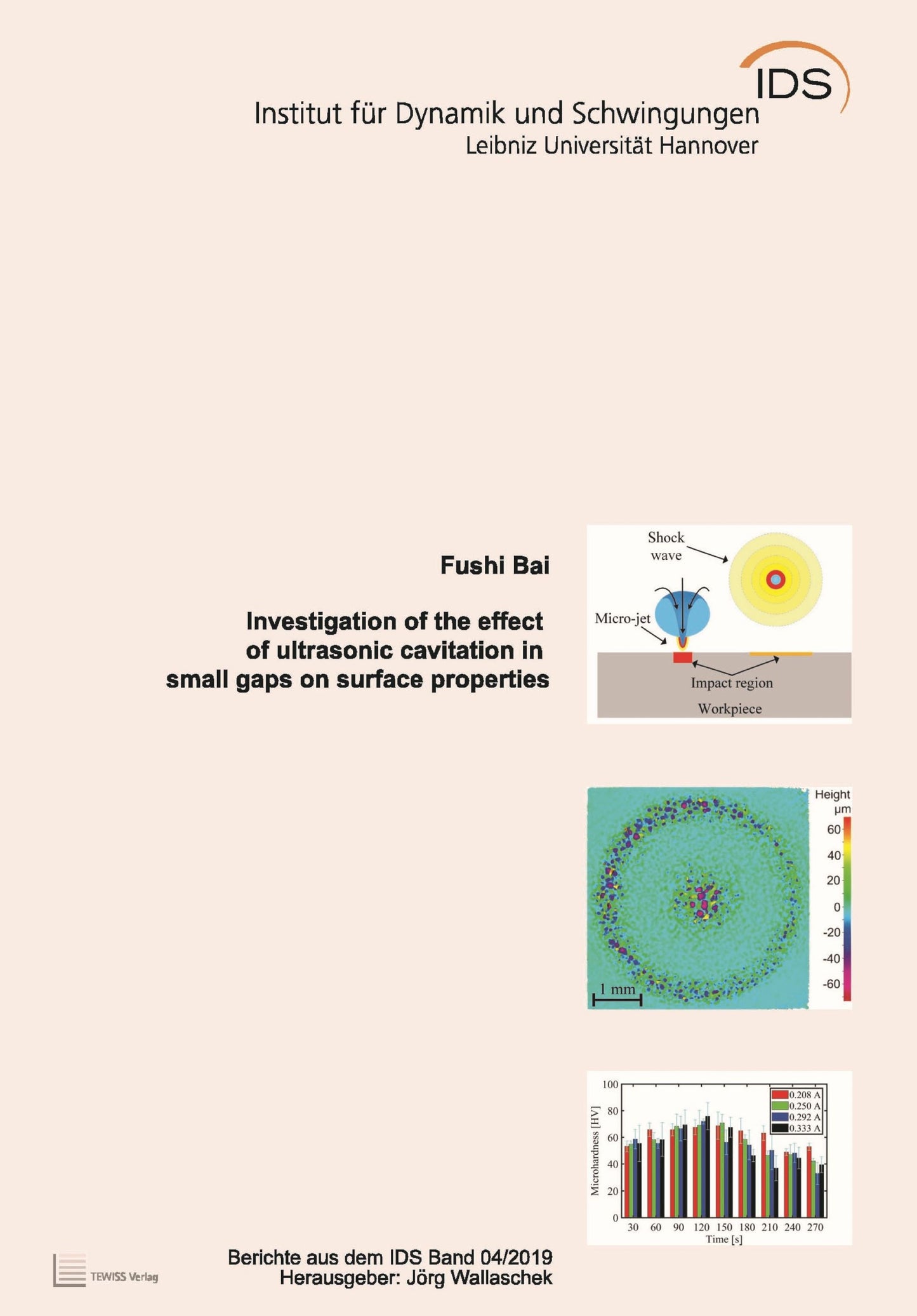Investigation of the effect of ultrasonic cavitation in small gaps on surface properties
Autor*in: Fushi Bai
ISBN: 978-3-95900-329-2
Dissertation, Leibniz Universität Hannover, 2019
Herausgeber*in der Reihe: Jörg Wallaschek
Band-Nr.: IDS 04/2019
Umfang: 120 Seiten, 71 Abbildungen
Schlagworte: Ultrasonic cavitation, gap width, process time, surface properties, Ultraschall-Kavitation, Spaltbreite, Prozesszeit, Oberflächeneigenschaften
Kurzfassung: Ultrasonic cavitation can be used to improve surface properties of workpieces in industrial applications. During this surface enhancement process, a small gap is required to generate high impact forces on the workpiece surfaces. The distribution of cavitation bubbles, the optimal gap width and the process time highly affect the treated surface properties. In this thesis, the distribution of sound fields in the small gaps and the optimal standoff distance are simulated with the consideration of bubble interactions. Then, sonochemiluminescence and surface volume variation experiments are carried out. Additionally, a piezoelectric force sensor is designed to detect impact forces. Finally, plastic deformation volume is studied to more accurately identify the optimal process time. The simulation and experimental results show good agreements.


